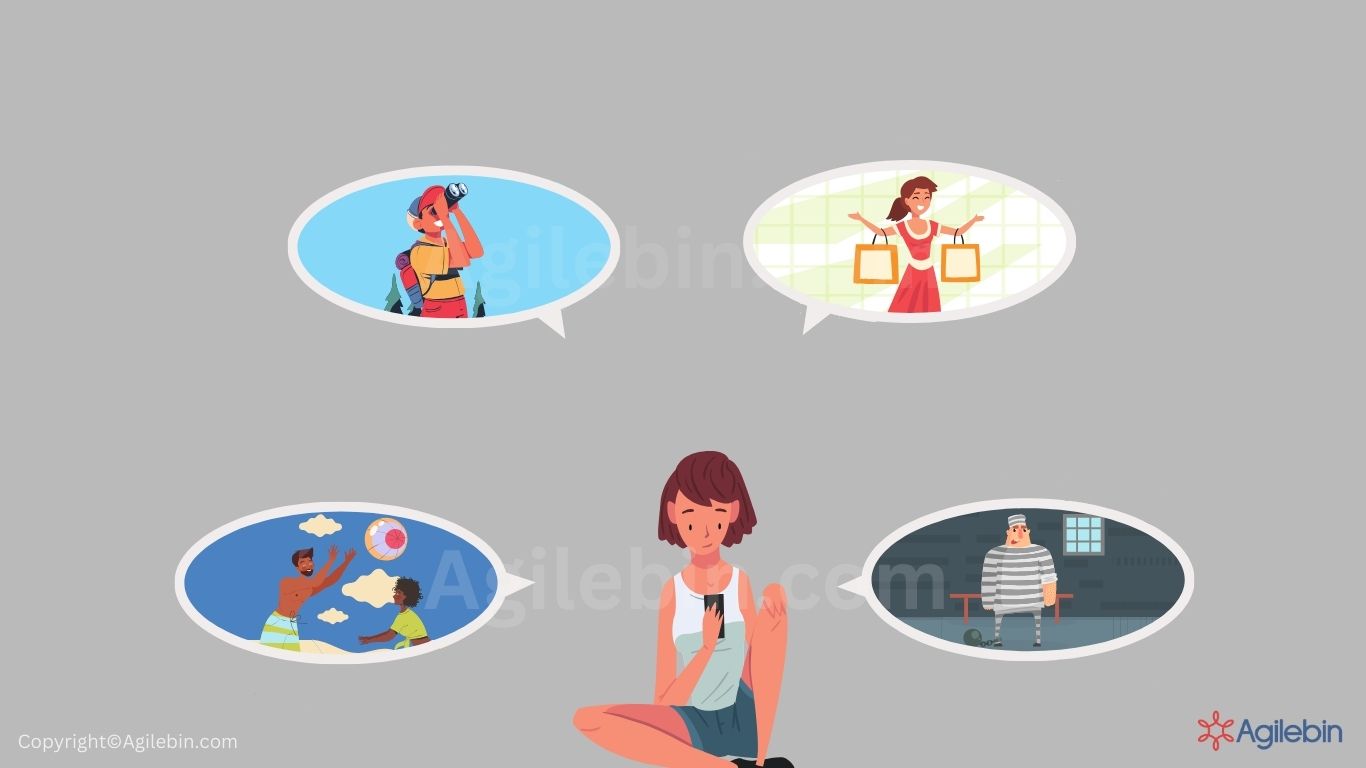ESVP Retrospective
An ESVP Retrospective is a team meeting format to gather insights based on the perspectives of Explorer, Shopper, Vacationer, and Prisoner.

What is a ESVP Retrospective?
An ESVP Retrospective is a structured agile meeting format where teams reflect on their project or sprint from four distinct perspectives: Explorer, Shopper, Vacationer, and Prisoner. The Explorer perspective encourages innovative ideas and opportunities for improvement, while the Shopper perspective seeks external insights and best practices. Vacationer reflects on positive aspects and achievements, promoting team morale, while Prisoner identifies obstacles and frustrations hindering team performance. This approach fosters diverse insights, promotes continuous improvement, and enhances team dynamics by addressing both successes and challenges comprehensively.
How to Conduct a ESVP Retrospective?
Conducting an ESVP Retrospective involves several key steps to ensure a productive and insightful meeting:
- Set Up: Prepare a conducive environment for the retrospective, ensuring it's comfortable and free from distractions.
- Introduce ESVP Framework: Explain the ESVP framework (Explorer, Shopper, Vacationer, Prisoner) to all team members, outlining the purpose of each perspective in gathering insights.
- Individual Reflection: Give team members time to individually reflect on each perspective. Encourage them to jot down observations and insights related to Explorer (innovative ideas), Shopper (external insights), Vacationer (positive aspects), and Prisoner (challenges).
- Group Discussion: Facilitate a structured discussion where each team member shares their insights for each perspective. Encourage open and honest communication to uncover different viewpoints and experiences.
- Capture Insights: Document key findings and insights from the discussion. Focus on identifying actionable items or recommendations for improvement based on the retrospective findings.
- Agree on Actions: Collaboratively decide on actionable steps to address identified issues, capitalize on strengths, and foster continuous improvement.
- Follow-Up: Schedule follow-up sessions to review progress on action items and iterate on lessons learned from the retrospective. Ensure accountability and track improvements over time.
Columns in ESVP Retrospective
In an ESVP Retrospective, the columns typically correspond to the four perspectives: Explorer, Shopper, Vacationer, and Prisoner. Here’s how these columns are defined and used:
- Explorer: This column focuses on exploring new ideas, innovations, and opportunities for improvement within the team's processes or project. Team members share insights on potential areas for growth, creative solutions, or new approaches that could enhance outcomes.
- Shopper: The Shopper column involves gathering insights and lessons learned from external sources or experiences. It encourages the team to look outside their immediate context for best practices, industry benchmarks, or relevant examples that could inspire improvements.
- Vacationer: In this column, team members reflect on aspects of the project or process that brought satisfaction, enjoyment, or positive outcomes. It highlights successes, achievements, and moments of team cohesion or personal growth that contribute to overall morale and well-being.
- Prisoner: The Prisoner column identifies frustrations, obstacles, or challenges that hindered productivity, collaboration, or team effectiveness. It focuses on bottlenecks, issues with tools or processes, communication breakdowns, or any other barriers that need addressing to improve team dynamics.
When to Conduct a ESVP Retrospective?
An ESVP Retrospective is ideally conducted at key points throughout a project or sprint lifecycle to gather meaningful insights and drive continuous improvement. Here are optimal times to conduct an ESVP Retrospective:
- End of a Sprint or Iteration: After completing a sprint or iteration within an agile framework, teams can reflect on what worked well (Vacationer), what innovative ideas were explored (Explorer), any external insights gained (Shopper), and challenges encountered (Prisoner). This timing allows for timely adjustments before the next sprint.
- Completion of a Project Milestone: When a project reaches a significant milestone, such as completing a phase or achieving a key deliverable, conducting an ESVP Retrospective helps in reviewing the overall project progress and identifying lessons learned across the various perspectives.
- After Significant Events or Initiatives: Following major events like product launches, customer demonstrations, or team workshops, an ESVP Retrospective can provide valuable insights into the effectiveness of strategies employed (Explorer), lessons learned from external benchmarks (Shopper), positive outcomes achieved (Vacationer), and challenges encountered (Prisoner).
- Regularly Scheduled Reviews: Implementing periodic ESVP Retrospectives at fixed intervals (e.g., monthly, quarterly) helps maintain a continuous improvement mindset. These regular reviews allow teams to assess ongoing processes and adapt strategies based on evolving insights and changing circumstances.
How can you conduct a ESVP retrospective with Agilebin?
Effortlessly conduct a ESVP retrospective with Agilebin's ready-to-use template!
Why Agilebin's template? Because it provides a realistic and immersive experience, making your ESVP retrospective feel authentic and meaningful. With Agilebin's ready-to-use template, you'll feel like you're navigating through the actual process, allowing for a more effective and insightful retrospective session.
Choose ESVP retrospective template in Agilebin
Choose the ESVP Retrospective template from Agilebin's collection of retrospective templates. This template is specifically designed to facilitate the ESVP Retrospective process, providing a structured framework for your team's reflection and improvement discussions
Invite team members to participate in the retrospective session
Invite team members to participate in the retrospective session by adding their email addresses or sharing the session link directly with them. You can choose between public access using a link, allowing anyone with the link to join, or restricted access, limiting participation to specific users or teams.

Facilitate Discussion with Sticky Notes
Agilebin offers pre-defined columns for the ESVP Retrospective, including "Planned," "Unplanned," "Success," and "Failure." Participants can add sticky notes to each column during the retrospective session, sharing their feedback, observations, and suggestions
